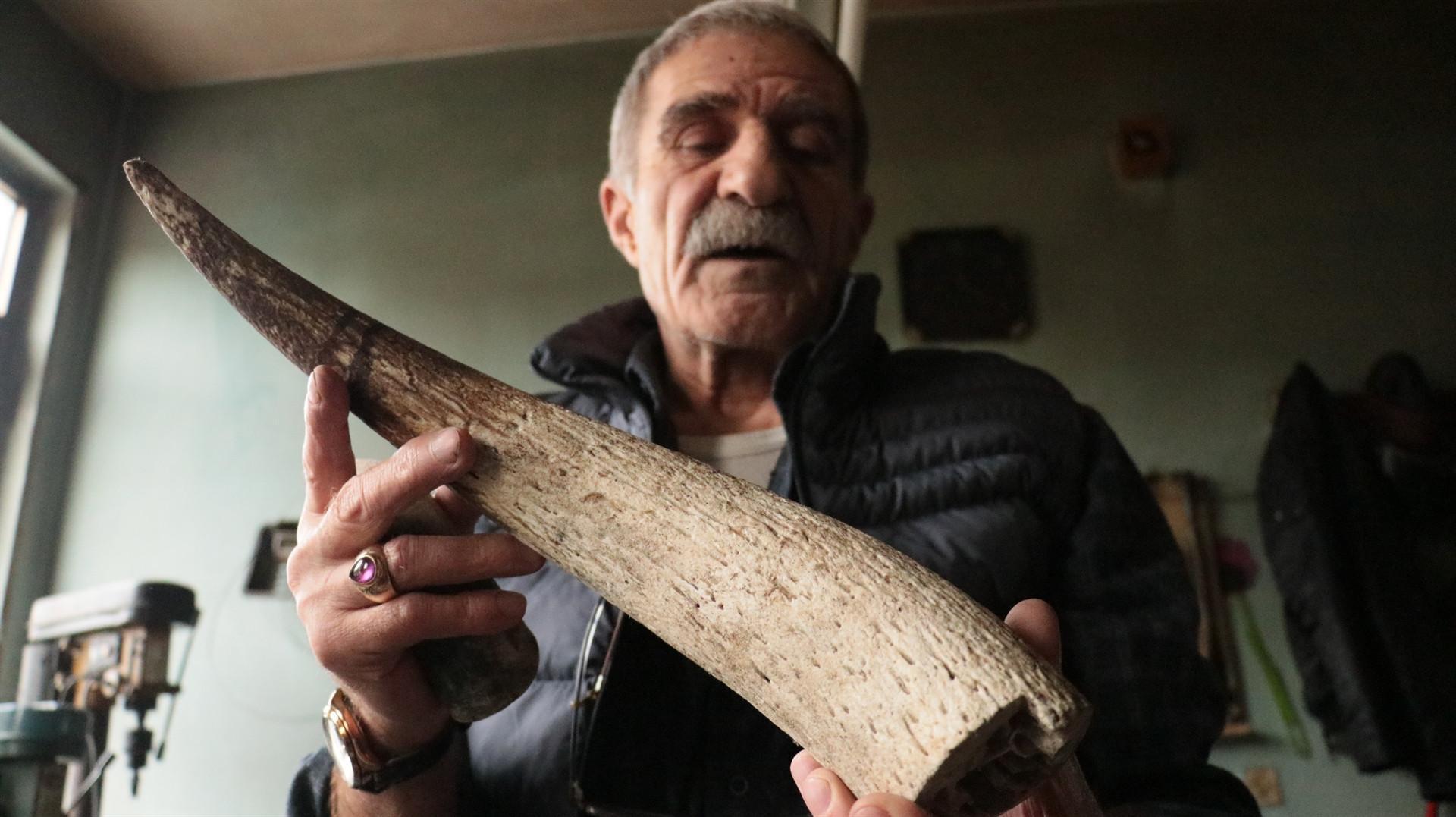
A 67-year-old jewelry artist, Mehmet Atışan, living in Güneyköy village of the northwestern province of Yalova, is well-known for his gold and silver jewelry items, which stands out as he makes them by combining Anatolian motifs from Çatalhöyük with materials obtained from horns.
Working in this field for the last 51 years and being one of the last representatives of horn jewelry embroidery, an art which is in danger of disappearing because the production process requires patience, Atışan wants to teach young people to keep the art and profession of horn jewelry alive.
Atışan, who is also a producer of the Culture and Tourism Ministry’s Central Directorate of Circulating Capital (DÖSİM), spoke to the state-run Anadolu Agency about the difficult and laborious process from horn to jewelry production.
Explaining about the process, he said that firstly the chemical components found in the bone inside the horn were extracted using crystal soda obtained from the water of Lake Van, and the remaining material was then kept in a special solution in the roof for eight months.
The horn is later cut and boiled in crystal soda for half an hour as the heat helps in achieving the consistency for shaping the horn.
“Then, by keeping it on fire, we wait for it to get consistency for shaping. We press it with a clamp. After waiting for six to seven hours, we take it from the clamp and leave it for one month, after which we cut the horn with a fretsaw, using the templates we have previously created. Finally, we move on to the stage of silver and coral plating,” he added.
Atışan said that he first started to work on gold embroidery in his village, which is famous for jewelry works, where he learned horn processing from a villager, Zeynel Abidin.
“I learned silver and horn jewelry embroidery from my master. I ran my shop in Istanbul Grand Bazaar for a while. Then I started making products for the Culture and Tourism Ministry,” he said, stating that he has been continuing the profession since 1969.
Noting that he won awards in jewelry design competitions organized in Turkey, he said, “I exhibit my products only in domestic and international fairs supported by the Culture and Tourism Ministry.”
“I perform this art for making art; I have nothing to do with money. I love making products. All of them have a different color; all of them have different color transitions. I am in love with the horn. I wouldn’t sell even a single one if I could because I can’t find a second horn of the same color and texture,” he added.
[HH] Adorning with agate, coral and turquoise stones
Explaining that he uses agate, coral and turquoise in his horn jewelry, Atışan said that these are precious stones with beautiful appearance.
Referring to the fact that jewelry making takes nine to 10 months, Atışan said, “The necklace on the neck of the Queen of Spain and the brooch on her collar were made here. The envelope opener on the king’s table was made here, too.”
Stating that he has produced horn jewelry for many other statesmen, bureaucrats and important figures as well, Atışan said that he gave a 300-hour course at the Public Education Center where nobody worked as a professional.
Stating that he wanted to find at least two university students in the center to survive this job, Atışan said, “I thought I would open two shops with the materials I have and gift these shops to the young people I find, but it did not happen because most of those who came to the course were retired people.”
“Unfortunately, young people have no patience. Our principle is patience, respect and love of work. Unfortunately, there is currently no one I can teach this job to. There is nothing I can do either,” he added.
Atışan said that the prices of the products, which are entirely handmade, start from 30 Turkish Liras and go up to 750 liras.